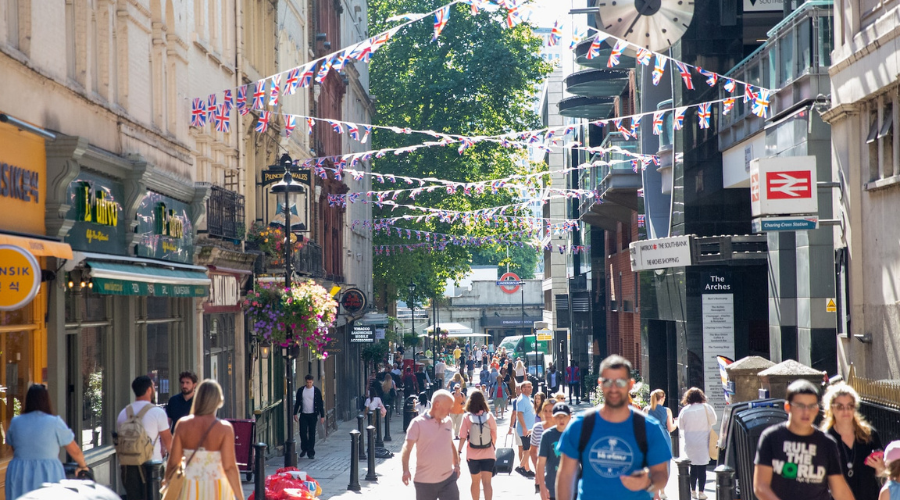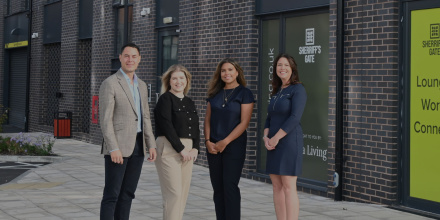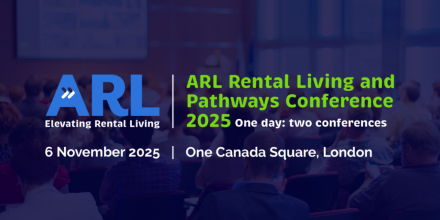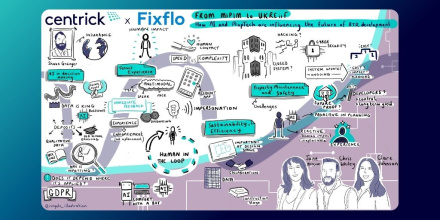The Status Quo Of Cities
Tenant demand in cities is currently experiencing a surge after some stagnation across the pandemic. From 2020 to 2021, tenants were yearning for more floor space and outdoor spaces as they abided by the ‘Stay At Home’ rules of quarantine, with more suburban locations being able to provide this space more aptly than inner city properties. However, as quarantine has lifted and Britain settles into a new normal, the appetite to live within bustling cities has returned.
Zoopla’s latest Rental Market Report revealed that large cities are seeing the most impressive growth year-on-year, which is fuelled by a boost in tenant demand. Rents in Manchester saw a huge boost of 15.6 per cent, followed by Glasgow with 14.1 per cent, and Bristol at 12.9 per cent. What’s more, the same report revealed the swiftness in which properties in bustling city hubs are being let out. If you have a rental unit to let in Bristol, expect for it to be let within 9 days; for Glasgow properties, the average letting period is 10 days; and homes in Birmingham, Cardiff, Edinburgh, Leeds, Nottingham, Sheffield and Southampton rental units are typically let in a fortnight or less.
Jobs And Education
The location of your BTR development is one of the key ingredients for creating demand for your properties, attracting tenants, and keeping your development running successfully. Many searching tenants will look for their next rental property by firstly specifying location based on nearby job opportunities or the educational facilities they may need to visit regularly, and will subsequently filter their search by price, the number of bedrooms, and availability of amenities such as parking and outdoor space.
Nearby educational facilities are a huge driver for BTR developments in cities – not only are cities home to more students, but BTR accommodation bears many similarities to student accommodation in terms of the community feel and lack of individual landlords in purpose-built student accommodation. Research from LandlordZone shows that cities with a large student population and multiple educational facilities have some of the biggest tenant demand. Leeds, Liverpool and Birmingham have the largest student populations in the UK, and this is reflected in impressive demand for rental properties in these cities. Leeds and Liverpool are expected to see average rental price growth of 2.6 per cent per year until 2026, and Birmingham is anticipated to see growth of 2.8 per cent. As such, it is vital that you attract and retain student tenants to propel the growth of your development. By the same metric, cities attract more business investment and therefore have more job opportunities, which similarly drives tenant demand. More job opportunities brings more tenants into city locations, thereby increasing the competition for well-placed rental units.
Nearby Amenities
Can tenants physically reach their workplaces and schools via public transport? Are there adequate facilities for parking? Can pet owners walk their dogs nearby, and stroll to a nearby shop for essentials?
If your BTR development is not located in an area with the correct amenities close by, it could be detrimental to your development’s ability to attract tenants. Your residents may not find it easy to get to doctors appointments, local shops or nearby parks, and may find it difficult to get public transport to reach facilities that are more further afield. Similarly, your tenants will demand amenities that fuel their lifestyle – from leisure and sports facilities, to bars and restaurants that offer ample opportunities to socialise. Thankfully for those building BTR residences in cities, there are typically plenty of amenities nearby to accommodate the area’s dense population, and ample regular transport.
If your build to rent development is set in a more suburban location and is comprised of larger apartments and houses which attract families, the desirability of nearby amenities will change – families will be more interested in having reputable schools and childcare facilities nearby. They will not expect to have ultra-convenient shops, gyms, bars and restaurants very close by, as is the nature of suburban areas, but this will necessitate ample parking facilities for these tenants to reach such amenities that are likely further afield.
Reputation And Regeneration
By the same metric, having specific buildings close to your BTR development may damage its reputation and be detrimental to the success of your scheme. If your development is close to riotous bars and clubs that emit noise pollution, unnerving graveyards, or factories that produce potentially harmful emissions, this could be off-putting to prospective residents.
But what constitutes a good location reputation? Regeneration is key in boosting the reputation of a specific location. It indicates that investment is being funnelled into the area to make it thrive and ensure that it has a bright future for residents, visitors and local businesses. By targeting regions that have regeneration in the pipeline, you can align your BTR development with this pre-existing growth and development. What’s more, redevelopment often brings greater tenant demand, with new business spaces and job opportunities bringing searching residents into the local area. Some impressive examples of this have happened in bustling cities which have seen extensive transformation of more dilapidated areas into truly modern spaces that bring opportunities, investment and growth. Birmingham’s Smithfield Regeneration scheme has guaranteed £1.9 billion in funding to revive local businesses and communities and will bring thousands of searching tenants into the area, namely from the new Curzon Street station. Similarly, the Derby City Centre Masterplan is set to bring a new sense of vitality to the city with £3.5 billion being spent on office spaces and additional employment land. These inner-city locations with impressive projected growth and employment opportunities make ideal places to consider your next BTR development.
Creating Community
At the heart of all BTR developments is the cornerstone of creating communities rather than just properties. To create a meaningful community that will stand the test of time, you will have to situate your property within a neighbourhood that can work in conjunction with your proposed BTR community. Your broader location must work cohesively with your BTR development and not against it, and your residents should be able to feel welcome in their wider neighbourhood as well as within the walls of your BTR scheme. For example, placing a student-friendly BTR development in the heart of a quiet suburban location with an abundance of senior citizens is counterintuitive – it will alienate residents in the wider community, and will not attract tenants to your development. This is why location-based studies regarding demographics are so important. They allow you to understand whether your proposed BTR-based community will fuse well with the existing neighbourhoods and whether your tenants and other residents will function and thrive alongside one another.
Looking To Start Your Next BTR Project?
You could offer the most state of the art amenities in a beautiful development for a great price, but your BTR development will never meet its full potential if it isn’t located on the most appropriate plot. That’s why VICI are here to help you pinpoint the best place to start your next BTR development to guarantee tenant appeal, resident retention and a premium experience for your BTR communities. For more information on how VICI can help you jumpstart your journey to BTR success, contact us via the form below:










